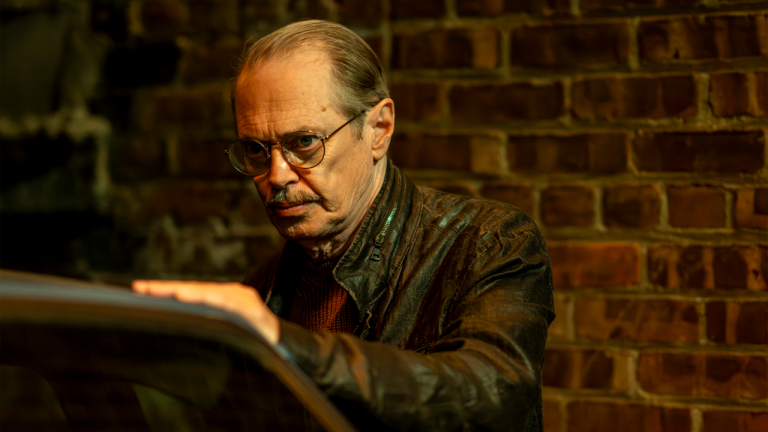Football isn’t just a game in the UK; it’s an emotion, a way of life, deeply ingrained in the culture. From the roaring stadiums of Anfield and Old Trafford to the local pubs of East London, the spirit of football resonates in every corner. This passion, this fervour, has often been immortalised on the silver screen, offering audiences a lens into the world of die-hard football fans, their highs, their lows, and everything in between. However, the cinematic portrayal of football enthusiasts isn’t the only sector catching attention in the modern era. The meteoric rise of online betting platforms, especially the top-rated sports betting sites outside of Gamstop, has intertwined the love of the game with the thrill of placing a wager. As we dive into the world of the best films about UK football fans, we’ll also glimpse the intersections of fandom, cinema, and the evolving landscape of sports betting.
The Evolution of Football Fan Portrayals in Film
Football, undoubtedly the UK’s most cherished sport, has for decades been the heartbeat of countless communities across the nation. The game has not only left its mark on stadiums and streets, but also in the world of film, giving rise to an array of movies centred around its fans. As we delve into the evolution of football fan portrayals in cinema, we’ll trace the journey from early caricatures and stereotypes to the modern, multifaceted representations that capture the essence of today’s football-loving populace.
Early Depictions and Stereotypes
Rewind to the early days of cinema, and you’ll notice a rather one-dimensional portrayal of football fans. These initial representations weren’t so much about the fans as they were about the mass culture of football.
- The Hooligan Image: One of the most prevailing images in early film was that of the football hooligan. Fuelled by the media’s tendency to highlight the violence and rowdiness associated with some football matches, films like “The Firm” (1988) and its subsequent 2009 version predominantly focussed on the darker side of fandom. The narrative mostly revolved around fan gangs and their territorial disputes, with football often serving as just the backdrop.
- Class Stereotypes: Another commonly observed theme was the portrayal of football fans as working-class heroes. The sport, having its roots in working-class communities, often depicted fans as hardworking, passionate individuals who sought solace and a sense of community in football. Films such as “When Saturday Comes” (1996), starring Sean Bean, presented a rather stereotypical image of the working-class fan, where football was an escape from the drudgery of daily life.
- Masculinity and Football: The emphasis on masculinity was palpable. Football was often shown as a ‘man’s game’, with fans portrayed as the embodiment of British machismo. The camaraderie, the rivalries, and the banter—all were steeped in a kind of masculine energy that was both celebrated and critiqued.
Modern Interpretations and Nuanced Characters
As with all art forms, cinema too evolves with society. Today’s filmmakers are more conscious and cognizant of the diverse football fan base. Modern films not only challenge past stereotypes but also paint a holistic picture of what it means to be a football fan in the 21st century.
- Beyond Gender: Modern portrayals recognise and celebrate the fact that passion for football isn’t limited by gender. Films like “Bend It Like Beckham” (2002) not only explore the aspirations of female football players but also delve into the world of female football enthusiasts. This shift challenges the age-old notion of football as a male-dominated realm.
- Diversity in Fandom: Contemporary films showcase a mosaic of fans hailing from varied backgrounds, ethnicities, and beliefs, reflecting the true, cosmopolitan nature of British football fandom. “The Other Half” (2006), for instance, beautifully interweaves romance with football, emphasising how the sport can bridge cultural and racial divides.
- Depth in Characterisation: Fans aren’t just part of the backdrop anymore. They’re often central to the plot, showcasing a range of emotions, complexities, and narratives. Consider the heartfelt tale of “Looking for Eric” (2009), where a down-and-out postman, with the help of his footballing hero Eric Cantona, seeks to rebuild his life. The film brilliantly captures the spiritual and emotional bond between a fan and the game.
- Shifting From Hooliganism: While the theme of hooliganism isn’t entirely absent from modern films, it’s approached with more nuance and sensitivity. “Green Street” (2005), while dealing with hooligan culture, also focuses on the protagonist’s journey of self-discovery and understanding of fan loyalty.
Top Films Celebrating UK Football Fandom
The allure of football goes far beyond the 90 minutes of game play on the pitch. It’s about the spirit, the community, the roaring crowds, and the shared moments of euphoria or despair. Over the years, the world of cinema has tried to capture this essence, offering a deeper look into the lives of those who live and breathe football – the fans. The UK, being the birthplace of football, has naturally seen a plethora of films dedicated to its fans. And while many films have graced the silver screen, a few stand out for their compelling narratives, impeccable character portrayal, and their realistic depiction of football culture. Let’s delve into three such iconic films that celebrate UK football fandom at its rawest.
“Green Street Hooligans” – More than Just Fights
“Green Street Hooligans” (2005), directed by Lexi Alexander, is often the first name that pops up when discussing films about football fandom. At a cursory glance, it seems to revolve around football hooliganism, especially the infamous ‘firms’ associated with English clubs. But a deeper dive into the narrative reveals a layered story.
The film, starring Elijah Wood and Charlie Hunnam, begins with an unjustly expelled journalism student, Matt, who gets introduced to the world of football hooliganism. However, the story is not just about the fights. It delves into themes of brotherhood, loyalty, and honour. The Green Street Elite (GSE), the firm supporting West Ham United, isn’t depicted merely as a group of thugs, but as a brotherhood bound by a code.
The raw energy of matchdays, the camaraderie among fans, the chants, and the atmosphere of Upton Park—all serve as a backdrop to showcase the profound impact of football culture on individual lives. The BBC, in its review of the film, highlighted its attempt to show the human side of hooligans, making it an essential watch for those trying to understand the depth of football fandom in the UK.
“The Football Factory” – Exploring Working-Class Roots
Another gritty representation of football fandom, “The Football Factory” (2004) directed by Nick Love, dives deep into the psyche of British working-class youth and their association with football. Based on the novel by John King, the film stars Danny Dyer as Tommy Johnson, a young man trapped in the monotony of life, finding solace only in the adrenaline of football weekends.
The narrative offers a stark portrayal of the issues faced by the British working class – racism, toxic masculinity, generational conflicts, and, of course, football hooliganism. The fans in the film, especially those of Chelsea and Millwall, are shown not just as violent thugs but as products of their socio-economic backgrounds. Their frustrations, desires, and the need for belonging are all channelled through their allegiance to their football clubs.
The dialogue is sharp, and the characters are raw, making “The Football Factory” an unfiltered look into the complexities of football fandom intertwined with the struggles of working-class identity.
“ID” – Delving into the World of Football Gangs
Released in 1995, “ID” stands out as one of the earliest films that delved into the world of football hooliganism and its impact on individuals. Directed by Philip Davis, the plot is centred around a group of police officers who go undercover to infiltrate football gangs.
While the storyline might sound straightforward, what makes “ID” stand out is its exploration of the human psyche. The protagonist, played by Reece Dinsdale, initially takes on the undercover role reluctantly but slowly becomes consumed by the world of hooliganism, blurring the lines between his real identity and the alter ego.
This deep immersion into the culture, the allure of belonging, and the intoxication of violence are depicted with incredible realism. The film, in many ways, acts as a mirror, reflecting the dark underbelly of football fandom while also questioning the thin line between one’s role and identity.
The electrifying atmosphere of the terraces, the passion of the chants, and the sheer chaos of match days serve as more than just a backdrop. They become integral to the narrative, making “ID” a compelling watch for anyone keen on understanding the extremities of football fandom.
The Betting Side of Football Films
The fervour of football, with its unpredictable twists and turns, serves as the perfect backdrop for tales of high stakes, both on and off the pitch. While cinema has often focused on the players, managers, and fans, a subset of films delves into the thrilling, often tumultuous world of betting in football. The stakes are high, the risks even higher, and the line between success and ruin is razor-thin. From gut-wrenching tales of addiction to light-hearted comedies, these films capture the essence of the gamble that is as much a part of football as the game itself. Turning to sources like Wikipedia for a quick overview of these films reveals the depth and variety in their approach to the world of sports betting. Let’s explore some of the most noteworthy ones.
“The Gambler” – A Look into Obsession and Desperation
While “The Gambler”, directed by Rupert Wyatt, isn’t strictly about football, its exploration of the dangerous allure of betting makes it a pivotal watch for anyone trying to understand the psyche of a gambler. Mark Wahlberg plays Jim Bennett, an English professor by day and a high-stakes gambler by night.
Throughout the film, Bennett’s double life becomes a metaphor for the duality faced by many gamblers—the outward appearance of control contrasted with inner turmoil and desperation. His reckless betting habits, spanning various sports including football, become less about the thrill of winning and more about the abyss of self-destruction.
“The Gambler” is less about the mechanics of betting and more about the psychological implications. It’s a deep dive into obsession, the cycle of debt and repayment, and the lengths to which one goes to chase the elusive high of a win. Bennett’s journey, underscored by his interactions with loan sharks, his students, and his family, paints a haunting portrait of addiction and redemption.
“Two for the Money” – Where Betting Meets Mentorship
Al Pacino and Matthew McConaughey come together in “Two for the Money”, a film that brings to the forefront the high-stakes world of sports betting. Unlike “The Gambler”, this film doesn’t dwell on the ruinous side of betting but instead delves into the world of professional sports advice.
McConaughey plays Brandon Lang, a former college football star who, after an injury, discovers a knack for accurately predicting game outcomes. His talent catches the eye of Walter Abrams (played by Pacino), a seasoned sports handicapper. What ensues is a roller-coaster journey of mentorship, where the thrill of the bet intermingles with personal ambitions and egos.
The film, in its essence, highlights the behind-the-scenes world of sports betting, where millions hinge on predictions, and where seasoned professionals like Abrams use every trick in the book to get ahead. “Two for the Money” is as much about the relationship between Lang and Abrams as it is about the world of football betting, making it a multi-layered exploration of ambition, morality, and the price of success.
“Odds and Evens” – The Comic Side of Football Betting
While most films about betting veer towards the dramatic and intense, “Odds and Evens” offers a comedic respite. Though the film’s primary focus isn’t football, the betting elements interwoven with football references provide many light-hearted moments. It’s a testament to the fact that while the world of betting can be intense, there’s a lighter side to it, filled with misadventures and comedic blunders.
The plot revolves around a series of comedic situations stemming from bets, misunderstandings, and of course, the unpredictable nature of sports outcomes. The characters find themselves in hilariously complicated situations, often of their own making, providing ample laughs throughout the film’s duration.
Wikipedia cites “Odds and Evens” as one of the few films that approach the topic of betting with humour, ensuring that while the audience is entertained, they also get a glimpse into the world of betting without the usual intense drama associated with it.
The Influence of Football Films on Betting Culture
Football is not just a sport; it’s an institution, a religion for many. The roaring crowds, the undying passion, the nail-biting finishes—it’s a spectacle that captures the imagination of millions. UK cinema has, over the years, tried to encapsulate this fervour through a plethora of films dedicated to football fans. While these films have portrayed the emotion, camaraderie, and sometimes the hooliganism associated with football, they’ve also delved into another critical aspect—the world of betting. This intricate dance of risk, money, and luck has become a focal point in many narratives. But how do these films influence the real-world betting culture?
How Cinema Shapes Perceptions of Betting
Cinema, in its essence, is a mirror to society, reflecting and often amplifying our beliefs, desires, and fears. When it comes to betting, especially in the realm of football, films have played a crucial role in sculpting the popular narrative.
Positives: Films often romanticise the world of betting, portraying it as an adrenaline-fueled escapade where fortunes can change overnight. Scenes of last-minute wins leading to wild celebrations have become a staple, emphasising the joy and camaraderie of shared victory.
Negatives: On the flip side, cinema doesn’t shy away from the bleaker aspects. Addiction, financial ruin, broken relationships – the dire consequences of unbridled betting are laid bare. This dichotomy presents a complex, multifaceted image of betting.
To navigate this world safely, one needs guidance. And here, the 7 Indicators to Ensure the Safety of Your Bets becomes a beacon:
- Research: Always study the teams or players before placing a bet. Past performance, injuries, and other factors can influence outcomes.
- Know the Odds: Understanding odds can help you calculate the potential risk versus the reward.
- Set a Budget: Determine a fixed amount for betting and avoid exceeding it, regardless of the temptation.
- Avoid Emotional Betting: Make decisions based on facts and analysis, not on emotions or biases.
- Use Reliable Betting Platforms: Ensure the platform you use is licensed and has a good reputation.
- Understand the Rules: Different betting platforms and games can have varied rules. Know them thoroughly before diving in.
- Seek Help When Needed: Recognise the signs of addiction. If you feel you’re losing control, platforms like gamstop.co.uk offer guidance.
While films give us drama, in reality, ensuring the safety of one’s bets is paramount.
The Rise of Online Betting and Film’s Role
Football and its fervent fandom have long captured the British heart, and UK cinema hasn’t been far behind in portraying this love affair. As the digital age swept across industries, the world of football betting metamorphosed, moving from the bustling ambiance of local betting shops to the click of a mouse or a tap on a smartphone. Film, ever the reflection of societal trends, embraced this shift, giving audiences both a familiar yet renewed narrative.
The emergence of online betting platforms in the early 2000s not only changed the mechanics of placing a bet but also the ethos surrounding it. The cinema of this era began illustrating the savvy online bettor, equipped with data, apps, and a strategic mindset, a far cry from traditional portrayals of bettors relying on gut instinct and superstition.
However, with ease came its pitfalls. Films also started delving into the potential perils of online betting: the detachment from tangible money, the looming addiction, and the emotional aftermath of digital losses.
Conclusion
The marriage between cinema and football in the UK has always been a dynamic one. As society evolved, so did the stories told on the big screen. The rise of online betting brought with it new tales of thrill, strategy, and caution, reflecting the complex relationship society shared with this new digital frontier.
Cinema’s portrayal of online betting serves as both a mirror and a guide, reflecting our aspirations and apprehensions, while also nudging us towards a more informed and responsible engagement with the digital betting world. As fans of both football and film, it’s a symbiotic relationship we ought to cherish, learn from, and ultimately enjoy.

![Free Fire [2017]: Insults & Infections](https://79468c92.delivery.rocketcdn.me/wp-content/uploads/2017/06/free-fire-768x511.jpg)



![Ashleel Udyog Mitra Mandal [2020] Review: A Fever Dream that Works Only While It’s High on Fever](https://79468c92.delivery.rocketcdn.me/wp-content/uploads/2020/03/20200221_144650_0000.png)
